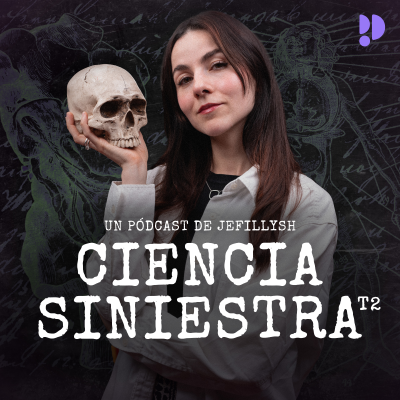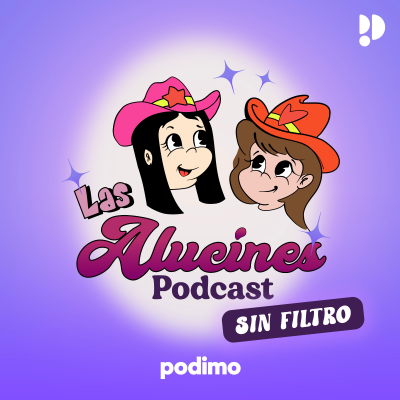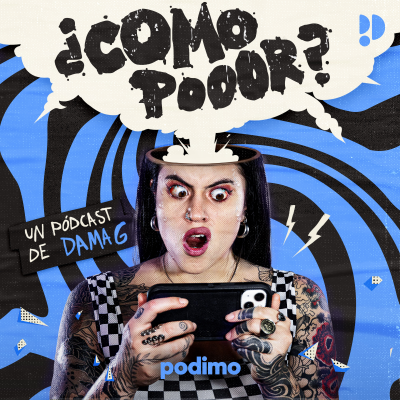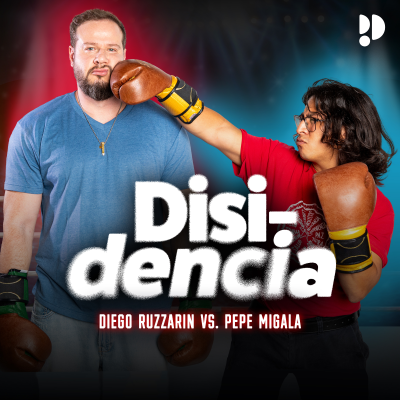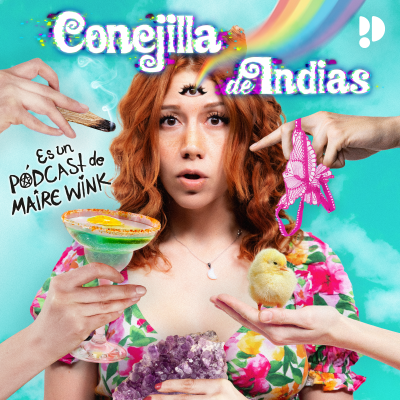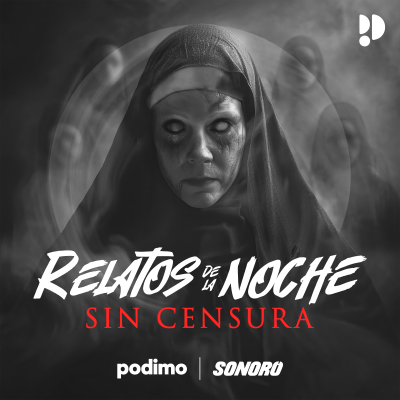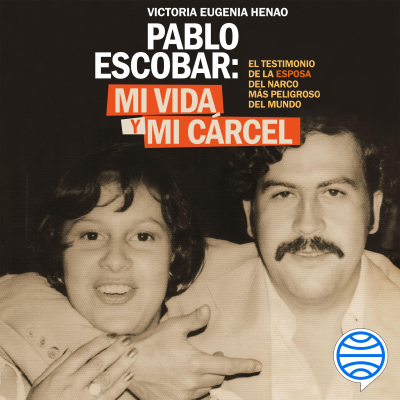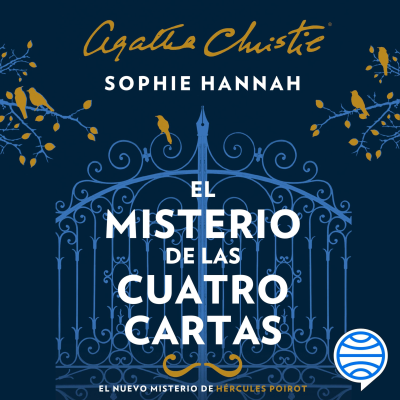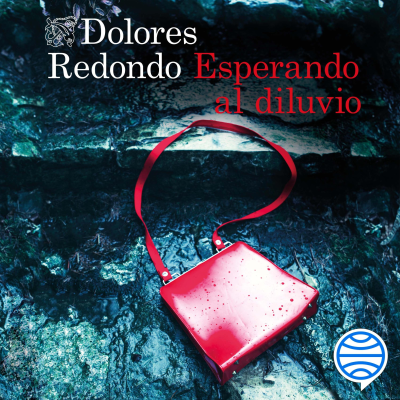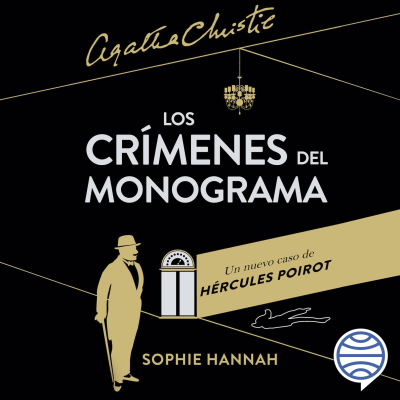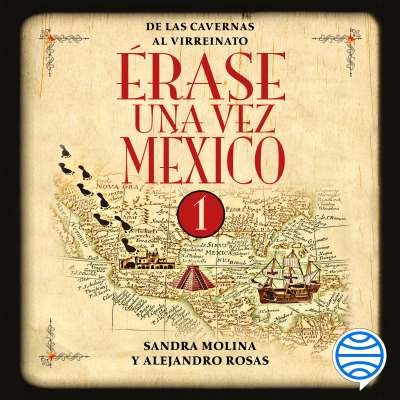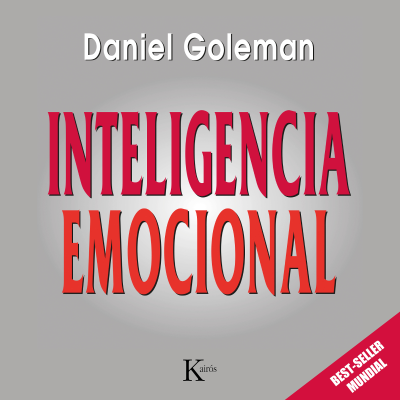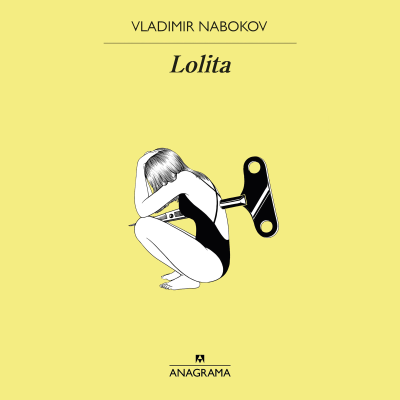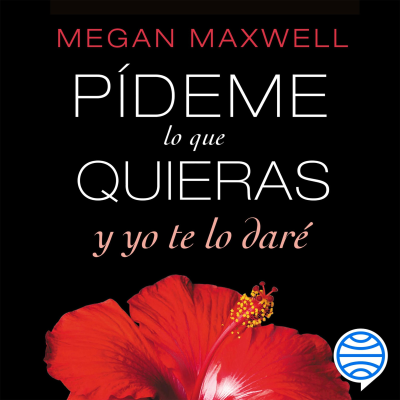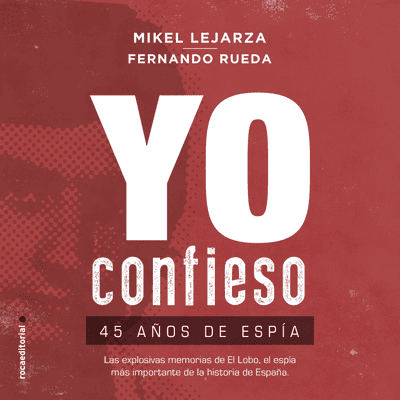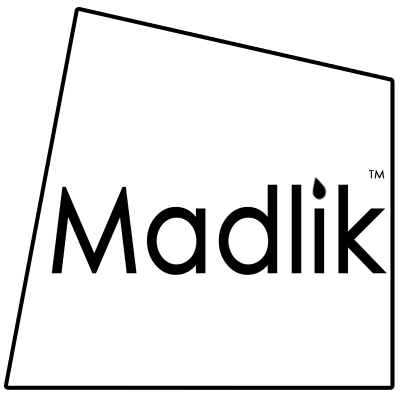
Madlik Podcast – Disruptive Torah Thoughts on Judaism
inglés
Historia y religión
Empieza 7 días de prueba
$99 / mes después de la prueba.Cancela cuando quieras.
- 20 horas de audiolibros al mes
- Podcasts solo en Podimo
- Podcast gratuitos
Acerca de Madlik Podcast – Disruptive Torah Thoughts on Judaism
The Malcolm Gladwell of the Torah -- That's how listeners describe Madlik™ – where sharp insight meets sacred text. With the curiosity of a cultural critic and the soul of a yeshiva bochur, Madlik ignites Jewish thought from a post-orthodox perspective. Each weekly episode explores the Torah with fresh eyes — drawing unexpected connections, challenging assumptions, and offering a heterodox yet deeply rooted take on halachic and philosophical questions. Born of a lifelong love for Jewish texts and a refusal to let tradition become static, Madlik keeps the flame of Judaism burning — not by preserving the embers, but by lighting new fires. In Hebrew, מדליק (Madlik) means to ignite. But in modern slang, it simply means cool. We aim to be both.
Todos los episodios
264 episodiosHanukkah: The Civil War We Forgot
Was Hanukkah really a war of Jews vs. Greeks — or a Jewish civil war we chose to forget? Was Hanukkah really Jews vs. Greeks — or a Jewish civil war we chose to bury under a story about oil? In this episode of Madlik Disruptive Torah, Geoffrey Stern and Rabbi Adam Mintz revisit the Hanukkah story through the sources. From Maccabees I and the politics of Ptolemy vs. Antiochus, to the lone Talmudic mention of the oil miracle (Shabbat 21b), they show how a messy internal power struggle became a clean miracle narrative. Key Takeaways 1. Hanukah began as a Jewish civil war — not just Jews vs. Greeks. 2. Each generation rewrites the Maccabees to fit its own battles. 3. The shamash — the helper candle — may be Hanukkah's real hero today. Timestamps [00:00] Hanukkah beyond oil and miracles [03:12] Why the Talmud barely explains Hanukkah [05:01] The forgotten Jewish civil war [07:22] Hellenists vs. Maccabees reexamined [09:48] Power, empires, and internal factions [12:30] Modern culture wars through Hanukkah [14:55] Why the rabbis hid the conflict [17:05] Hillel vs. Shammai as metaphor [19:10] The shamash in Israeli children's stories [23:40] Hanukkah as a model for unity Links & Learnings Sign up for free and get more from our weekly newsletter https://madlik.com/ [https://madlik.com/] Sefaria Source Sheet: https://www.sefaria.org/sheets/695661 [https://www.sefaria.org/sheets/695661] Transcript here: https://madlik.substack.com/ [https://madlik.substack.com/]
Bottom Up Torah: How Queer Jews Are Changing Orthodoxy
Imagine being told you belong to a faith that is fighting to keep you out—and refusing to leave. In this week's Madlik, Geoffrey Stern and Rabbi Adam Mintz welcome Rabbi Steve Greenberg, the first openly gay Orthodox-ordained rabbi, for a deeply personal and wide-ranging conversation. Key Takeaways 1. Vulnerability transforms the meaning of Torah. 2. Bottom-up change is reshaping Orthodoxy. 3. The tradition has the capacity — and the precedent — to grow. Timestamps [00:00:12] Rabbi Steve Greenberg's coming-out context and the question of LGBTQ+ Jews as teachers of Torah. [00:03:11] Steve's Yom Kippur aliyah story and being vulnerable to the text. [00:04:46] Confronting the biblical verses; reframing what Leviticus might mean. [00:06:22] Tamar's courage and parallels to LGBTQ+ belonging. [00:08:57] "Bottom-up Judaism": queer Jews staying, not leaving — shifting the halachic landscape. [00:11:39] Google rabbis, post-COVID authority shifts, and personal autonomy in community life. [00:15:08] Israeli changes: rejecting the Rabbanut, forming new models of partnership. [00:17:42] A painful role-play with a rabbi exposes how harmful "lifelong celibacy" messaging is for gay teens. [00:21:19] New data on LGBTQ+ rabbinical students and why queer spiritual sensitivity strengthens Jewish leadership. [00:24:56] Parents as powerful advocates: Orthodox families pushing shuls and schools to stop rejecting their children. Links & Learnings Sign up for free and get more from our weekly newsletter https://madlik.com/ [https://madlik.com/] Sefaria Source Sheet: https://www.sefaria.org/sheets/691629 [https://www.sefaria.org/sheets/691629] Transcript here: https://madlik.substack.com/ [https://madlik.substack.com/] Eshel: https://www.eshelonline.org/ [https://www.eshelonline.org/]
The Jewish Future Israel Wants… But Fears to Admit
Beneath the surface, Israel is fighting for the soul of its religion — and most of us don't even see the battle lines. In this episode of Madlik Disruptive Torah, Geoffrey Stern and Rabbi Adam Mintz are joined by Professor Adam S. Ferziger to explore the quiet revolution reshaping Israeli Judaism. Drawing on his new book, Agents of Change, Ferziger reveals how American Modern Orthodoxy—its values, institutions, and worldview—has profoundly influenced Religious Zionism and the broader Israeli religious landscape. From the tension between nationalism and modernity to the emergence of a new Israel-born generation, we uncover the cultural, political, and spiritual crossroads Israel now faces. Beneath the surface, Israel is fighting for the soul of its religion—and American Jews are playing a bigger role than anyone expected. Key Takeaways 1. American Modern Orthodoxy Has Become a Quiet Force in Israeli Judaism 2. Israeli Religious Zionism Is Splitting Into Two Distinct Paths 3. Israel's Next Generation of Leaders Will Be Religious — But Neither Haredi or National Religious Timestamps * [00:00:00] Jacob returns from exile with wealth, family, and a new identity; exile reframed as productive, not just punishment. * [00:01:00] Intro to Professor Adam Ferziger and his book Agents of Change about American Jews reshaping Israeli Judaism. * [00:02:00] Host sets the frame: modern Orthodoxy's influence on Israeli religious life, education, feminism, and LGBTQ inclusion. * [00:03:00] Ferziger's personal story: gap year yeshiva, Aliyah in 1987, building family and rabbinic life in Kfar Saba. * [00:04:54] Early political snapshot: the failed "Meimad" experiment and how Anglo moderates felt marginal and deviant. * [00:06:36] Shift in the 2000s: religious-Zionist camp diversifies; modern Orthodox voices gain legitimacy and visibility. * [00:09:05] Explaining American Modern Orthodoxy: Torah plus general culture, YU, day schools, Rav Soloveitchik's synthetic model. * [00:14:10] Rise of "Hardal": nationalist-Haredi style religiosity, stricter halakha, and a more redemptive, messianic Zionism. * [00:21:45] The "agents of change": eight American rabbis/educators whose Israeli students indigenize and radicalize their ideas. * [00:34:15] Why this matters beyond religion: "Israeli Judaism" and how moderate Orthodox trends may shape Israel's future leadership. Links & Learnings Sign up for free and get more from our weekly newsletter https://madlik.com/ [https://madlik.com/] Sefaria Source Sheet: https://www.sefaria.org/sheets/692993 [https://www.sefaria.org/sheets/692993] Transcript here: https://madlik.substack.com/ [https://madlik.substack.com/] Adam Ferziger's Book https://nyupress.org/9781479817559/agents-of-change/ [https://nyupress.org/9781479817559/agents-of-change/]
He's Christian. He Fights for Israel. He Speaks Talmudic Aramaic.
Ready to discover how reviving a lost language can reshape the whole Middle East? Ta Shma (come and hear) Geoffrey Stern and Rabbi Adam Mintz are joined by Shadi Khalloul—IDF paratrooper veteran, founder of the Israeli Christian Aramaic Association, and one of the world's most passionate advocates for reviving the Aramaic language. Together, they explore Parshat Vayetzei and the hidden "Rosetta Stone" moment in Genesis 31, where Jacob and Laban name the same monument in Hebrew and Aramaic. Key Takeaways 1. Aramaic is the Hidden Backbone of Jewish Life 2. Aramaic Once United the Ancient World—And Can Still Bridge Communities Today 3. Israel's Aramean Christians Are a Forgotten but Loyal Minority whose story will surprise and inspire you Timestamps [00:00:00] Opening: Jewish prayers written in Aramaic & introduction to Shadi Kaul [00:01:03] Shadi's unique role: soldier, educator, reviver of Aramaic culture [00:02:12] Shadi's background: identity, community history, and connection to Israel [00:03:47] Serving in the IDF and discovering his Aramaic purpose in the U.S. [00:05:32] Founding the Israeli Christian Aramaic Association & education initiatives [00:07:14] Plans for Aramaic towns, schools, and coexistence programs [00:09:22] Daily language reality: Arabic spoken, Aramaic preserved in prayer [00:11:48] Parallels with Jewish language revival and historical connections [00:14:27] Shadi's family displaced in 1948 and the ongoing struggle for recognition [00:32:41] Aramaic as the ancient international language—the "first internet" Links & Learnings Sign up for free and get more from our weekly newsletter https://madlik.com/ [https://madlik.com/] Sefaria Source Sheet: https://www.sefaria.org/sheets/691050 [https://www.sefaria.org/sheets/691050] Israeli Christian Aramaic Association - http://www.aramaic-center.com/?lang=en [http://www.aramaic-center.com/?lang=en] A History of the First World Language - https://a.co/d/fjHe9C1 [https://a.co/d/fjHe9C1] Transcript here: https://madlik.substack.com/ [https://madlik.substack.com/]
Trickery or Evolution? Rethinking Jacob's Stolen Blessing
What if one of the Torah's greatest heroes was actually its most scandalous trickster? In this episode of Madlik Disruptive Torah, Geoffrey Stern and Adam Mintz dive into one of the most provocative moments in the Torah: Jacob's audacious act of deception to secure his father Isaac's blessing in Parashat Toldot. Rather than smoothing over the ethical wrinkles, we sit with the discomfort, exploring why the Torah insists on portraying our third patriarch as a trickster—and what we're meant to learn from a hero whose virtues are tangled with flaws. Key Takeaways 1. The Torah Embraces Imperfect Heroes prompting readers to grapple with imperfection as part of the human and spiritual journey. 2. Biblical stories were shaped by and for public reading; audiences came with expectations based on oral traditions and prior knowledge. 3. Spiritual growth often requires confrontations with failure and the "divine ruse"—a process of growth through challenge, not perfection. Timestamps * [00:00:00] Geoffrey opens the episode and introduces the problem of Jacob stealing the blessing. * [00:00:25] He reframes the question: maybe the Torah wants us to sit with the discomfort. * [00:00:47] Overview of themes: ancient oil traditions, imperfect heroes, Maimonides on change. * [00:01:08] Show intro + housekeeping (YouTube, Substack, source sheet, reviews). * [00:01:27] Main question of the week: why portray Jacob this way, and are we projecting modern morality? * [00:02:18] Opening character analysis: Jacob's name, symbolism of "heel holder," zig-zag personality. * [00:04:01] Plot recap: Isaac asks Esau for hunted game, Rebecca overhears and initiates the plan. * [00:05:02] The key deception moment: Jacob tells Isaac, "I am Esau your firstborn." * [00:07:27] Esau's character through rabbinic commentary: glutton, outdoorsman vs. Jacob the tent-dweller. * [00:22:03] Jacob's consequences begin: exile, never seeing his mother again, being tricked by Laban. Links & Learnings Sign up for free and get more from our weekly newsletter https://madlik.com/ [https://madlik.com/] Sefaria Source Sheet: https://www.sefaria.org/sheets/689945 [https://www.sefaria.org/sheets/689945] Transcript here: https://madlik.substack.com/ [https://madlik.substack.com/]
Elige tu suscripción
Premium
20 horas de audiolibros
Podcasts solo en Podimo
Podcast gratuitos
Cancela cuando quieras
Empieza 7 días de prueba
Después $99 / month
Empieza 7 días de prueba. $99 / mes después de la prueba. Cancela cuando quieras.

